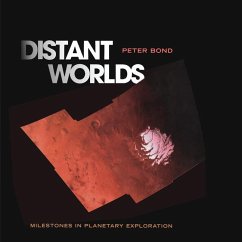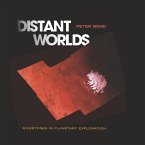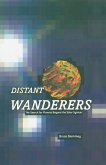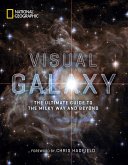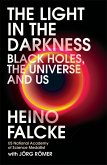CHAPTER 1: DISCOVERING DISTANT WORLDS 3 CHAPTER 2: MERCURY: THE IRON PLANET 21 CHAPTER 3: VENUS: THE RUNAWAY GREENHOUSE 45 CHAPTER 4: THE MOON: QUEEN OF THE NIGHT 69 5: MARS: THE RED PLANET CHAPTER 101 CHAPTER 6: ASTEROIDS: VERMIN OF THE SKIES 129 CHAPTER 7: JUPITER: KING OF THE PLANETS 147 CHAPTER 8: SATURN: LIGHTWEIGHT LORD OF THE RINGS 185 CHAPTER 9: URANUS: THE TOPPLED GIANT 217 CHAPTER 10: NEPTUNE: THE LAST GIANT 237 CHAPTER 11: PLUTO: KING OF THE KUIPER BELT 257 CHAPTER 12: COMETS: COSMIC ICEBERGS 269 APPENDICES 1: Lunar and Planetary Missions 285 2: Planetary Data 298 3: Satellite Data 299 4: Planetary Rings 305 5: The Largest Known Kuiper Belt Objects 307 6: Lunar and Planetary Firsts 308 7: Selected Reading List 310 8: Selected Websites 314 INDEX 317 VII Until about 500 years ago, the Earth was believed to lie at Pluto and its recently discovered, larger cousin in the far the center of the Universe, with the Sun and five planets reaches of the Sun's realm. For the first time, human eyes revolving around it. The planets themselves were merely have been able to see towering cliffs, dust devils, erupting points of light that drifted across the stellar constellations.
From the reviews:
"The author describes the achievements of the astronomers, space scientists, and engineers ... . This compelling account of the Space Age includes dramatic accounts of the daring, resourcefulness, and ferocious competitive zeal of renowned as well as almost-forgotten space pioneers; clear explanations of the precursors to modern astronomy ... 100 informative photographs, maps, simulated scenarios, and technical illustrations, many in full color; appendices on the physical properties of our solar system; as well as a comprehensive list of 50 years of solar system missions." (The Lunar and Planetary Information Bulletin, May, 2007)
"Peter Bond, a professional Science writer with close ties to the Royal Astronomical Society, provides a comprehensive and well-illustrated summary of planetary exploration ... . The account is both accurate and up-to date. ... This is an ideal introduction to the current state of Solar System science, whether you're a science student, amateur astronomer or interested layperson." (Fred Taylor, BBC Sky at Night, August, 2007)
"In an overview of 'where we stand today', Peter Bond describes the remarkable achievements of the astronomers, space scientists, and engineers who have made it possible to unravel the mysteries of the distant worlds that make up our Solar System. ... More than 250 illustrations, including photographs, maps, artists' impressions, and explanatory diagrams-many of them in full color. ... Bond shows how the great enterprise of planetary exploration can justifiably be regarded as one of the great triumphs of human civilization." (www.eurekalert.org, May, 2007)
"The author writes with a fresh, fast pace that captures the excitement of exploring each planet in those heady, early days of space exploration ... . The text is fully up-to-date, including results from the Huygens probe to Saturn's moon Titan, and the discovery of new moons orbiting Pluto. ...plenty of detail on the historical discoveries and science of each planet add to the value of this book. Packed with images ... this is a visual as well as textual masterpiece." (John Rowlands, Astronomy Now, July, 2007)
"Peter Bond explores how ground-based observers and robotic sentinels have alleviated our astronomical ignorance about the solar systern. ... Bond provides an engaging chronology of each world and its satellites, as well as separate chapters for asteroids and comets. ... Appendices list all planetary missions grouped by target, characteristics of the planets and satellites, lunar and planetary 'firsts', and a wealth of printed and online references." (Stuart J. Goldman, Sky and Telescope, October, 2007)
"As an introduction and overview to our current understanding of the solar system, Distant Worlds is a serviceable book. Bond provides a readable, accurate review of our knowledge of each planet, as well as comets and asteroids. ... Distant Worlds is a good review of our (more-or-less) current understanding of the solar system, particularly for those people not terribly familiar with anything more than the basics."(Jeff Foust, The Space Review, June, 2007)
"Bond writes in a clear, concise fashion that would be interesting reading for an undergraduate. ... The index is well done. Summing Up: ... General readers; lower division undergraduates." (J. R. Kraus, CHOICE, Vol. 45 (2), October, 2007)
"The author describes the achievements of the astronomers, space scientists, and engineers ... . This compelling account of the Space Age includes dramatic accounts of the daring, resourcefulness, and ferocious competitive zeal of renowned as well as almost-forgotten space pioneers; clear explanations of the precursors to modern astronomy ... 100 informative photographs, maps, simulated scenarios, and technical illustrations, many in full color; appendices on the physical properties of our solar system; as well as a comprehensive list of 50 years of solar system missions." (The Lunar and Planetary Information Bulletin, May, 2007)
"Peter Bond, a professional Science writer with close ties to the Royal Astronomical Society, provides a comprehensive and well-illustrated summary of planetary exploration ... . The account is both accurate and up-to date. ... This is an ideal introduction to the current state of Solar System science, whether you're a science student, amateur astronomer or interested layperson." (Fred Taylor, BBC Sky at Night, August, 2007)
"In an overview of 'where we stand today', Peter Bond describes the remarkable achievements of the astronomers, space scientists, and engineers who have made it possible to unravel the mysteries of the distant worlds that make up our Solar System. ... More than 250 illustrations, including photographs, maps, artists' impressions, and explanatory diagrams-many of them in full color. ... Bond shows how the great enterprise of planetary exploration can justifiably be regarded as one of the great triumphs of human civilization." (www.eurekalert.org, May, 2007)
"The author writes with a fresh, fast pace that captures the excitement of exploring each planet in those heady, early days of space exploration ... . The text is fully up-to-date, including results from the Huygens probe to Saturn's moon Titan, and the discovery of new moons orbiting Pluto. ...plenty of detail on the historical discoveries and science of each planet add to the value of this book. Packed with images ... this is a visual as well as textual masterpiece." (John Rowlands, Astronomy Now, July, 2007)
"Peter Bond explores how ground-based observers and robotic sentinels have alleviated our astronomical ignorance about the solar systern. ... Bond provides an engaging chronology of each world and its satellites, as well as separate chapters for asteroids and comets. ... Appendices list all planetary missions grouped by target, characteristics of the planets and satellites, lunar and planetary 'firsts', and a wealth of printed and online references." (Stuart J. Goldman, Sky and Telescope, October, 2007)
"As an introduction and overview to our current understanding of the solar system, Distant Worlds is a serviceable book. Bond provides a readable, accurate review of our knowledge of each planet, as well as comets and asteroids. ... Distant Worlds is a good review of our (more-or-less) current understanding of the solar system, particularly for those people not terribly familiar with anything more than the basics."(Jeff Foust, The Space Review, June, 2007)
"Bond writes in a clear, concise fashion that would be interesting reading for an undergraduate. ... The index is well done. Summing Up: ... General readers; lower division undergraduates." (J. R. Kraus, CHOICE, Vol. 45 (2), October, 2007)

